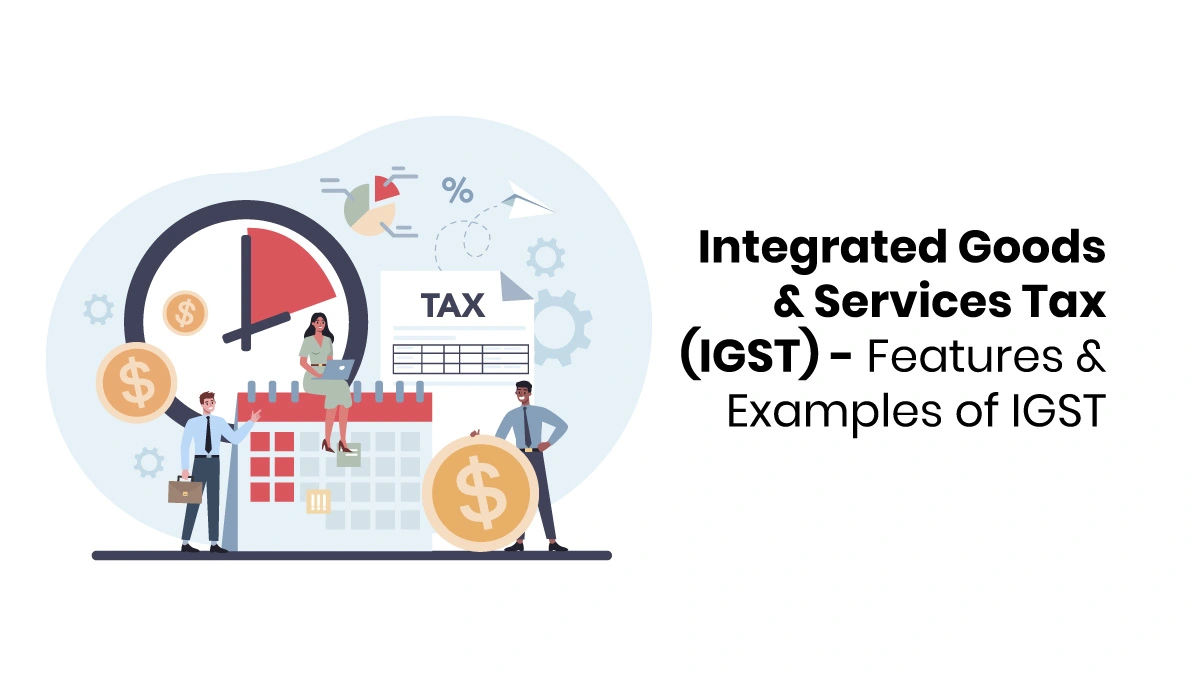Taxation is a way for the government to raise revenue, which is then used to provide services and infrastructure to the citizens. Different types of tax exist, and tax laws can vary between jurisdictions, so individuals and organisations must stay informed and meet their tax obligations. Tax interview questions can be helpful for job seekers preparing for a tax specialist role and anyone looking to improve their understanding of tax laws and regulations. These questions demonstrate a candidate’s knowledge of tax concepts and highlight their ability to communicate that knowledge effectively. Tax interview questions can cover various topics, including tax planning and preparation, tax compliance, tax research, tax laws and regulations, and more.
Tax Interview Questions
1. Define Tax
Taxes are a vital source of revenue for governments and are used to fund a wide range of public services and initiatives. They are usually imposed on various forms of Income, such as wages, investment gains, property sales, and goods and services purchased by consumers. The specific tax policies, rates, and types of taxes vary from country to country.
2. Explain Taxation
Taxation is the process by which governments raise revenue to fund their operations and provide public goods and services. It plays a crucial role in ensuring the sustainability and stability of the state and is an essential component of a well-functioning economy. Tax policies, rates, and regulations are often the subject of political debate, as different groups may have differing views on the appropriate level and distribution of tax burden.
3 . Define Direct tax
Direct taxes are a tax levied directly on the Income, profits, or wealth of individuals or organisations. They are not tied to specific transactions and are typically considered a more stable source of government revenue than indirect taxes, which are levied on goods and services. Because direct taxes cannot be passed on to others, they are considered a more progressive form of Taxation, as they are typically paid by those who are better off. Examples of direct taxes include income tax, corporate tax, and property tax.
4. Define Indirect taxes
Indirect taxes are a type of tax imposed on goods and services rather than on Income or wealth. They are typically added to the product’s price, and the tax’s ultimate burden is passed on to the consumer. Examples of indirect taxes include sales tax, value-added tax (VAT), and excise duties. Unlike direct taxes, which are considered a more progressive form of Taxation, indirect taxes are considered regressive, as they take up a higher proportion of Income from lower-income individuals. The advantage of indirect taxes is that they are easier to administer and collect, as they are typically imposed at the point of sale or import.
5. Define the history of the Tax regime in India
The history of Taxation in India dates back to ancient times and has evolved over the centuries. During British rule, India’s tax system underwent significant reforms, including introducing a modern income tax system and a comprehensive indirect tax system. After independence, the Indian government continued to develop and expand the tax system, introducing new taxes and reforming existing ones. In the 1990s, India underwent significant tax reforms, including introducing a value-added tax (VAT) and simplifying the tax code. Today, India’s tax system is a complex mix of direct and indirect taxes, with the government relying on income tax, corporate tax, indirect taxes, and other taxes to raise revenue.
6. Explain the term GST
GST stands for Goods and Services Tax. It is an indirect tax that was introduced in India in 2017. GST is a comprehensive, multi-stage, destination-based tax that is levied on every value addition in the supply chain, from production to final consumption. It replaces multiple indirect taxes, such as VAT, excise duty, and service tax, with a single tax applicable throughout the country. The GST collected by the central government is divided between the central and state governments based on a predetermined formula. The GST regime in India has created a single market for goods and services, reducing the cascading effect of multiple taxes and improving the ease of doing business.
7. Explain the features of GST
The comprehensive, multi-stage, destination-based nature of GST, along with input tax credits, uniform tax rates, a self-policing system, centralised electronic administration, and improved compliance, has helped make the tax system more efficient and transparent in India.
8. What is Income tax?
Capital gains and Income from other sources- The government uses the collected income tax to fund public spending on goods and services such as infrastructure, education, healthcare, and defence. Calculating income tax liability involves taking into account deductions and exemptions available under the tax laws.
9. Define GST Council
The GST Council is a body responsible for making decisions related to designing and implementing the Goods and Services Tax (GST) regime in India. It comprises the Union Finance Minister as its Chairperson, the Union Minister of State in charge of revenue, and the Finance Ministers of all states as its members. The GST Council operates through a consensus-based decision-making process, and its decisions are binding on both the central and state governments. The council plays a crucial role in shaping the GST regime in India and ensuring its smooth implementation and functioning.
10. How do you know about the latest tax laws, regulations, and rules?
In addition to national tax laws and regulations, it’s essential to stay informed about state tax laws changes, which can significantly impact businesses operating within the state. State governments often change their tax laws to address issues affecting small, medium, or large companies. These changes can range from updates to forms to changes in the calculation of taxes and other areas of legislation.
To stay informed about these changes, it’s a good idea to check in with your state’s Tax and Accounting boards, which can provide in-depth summaries and general information about the latest tax-related developments. Staying informed about changes to state tax laws can help businesses stay compliant and avoid potential penalties or legal issues.
11. Define GST Registration
GST registration is mandatory for businesses whose aggregate turnover exceeds the prescribed threshold limit, and it provides the taxpayer with a GSTIN, which must be quoted on all invoices. The GST registration process involves applying with required documents, such as PAN and bank details, to the government. Once the registration is approved, the taxpayer must comply with the tax obligations under the GST regime, including filing periodic GST returns and remitting taxes owed to the government.
12. Explain the Tax invoice
A tax invoice is an essential document under the GST regime as it is used to establish the liability to pay tax, claim input tax credits, and as evidence of the supply of goods or services. The format and contents of a tax invoice are specified under the GST laws and rules, and businesses must issue tax invoices for all taxable supplies. Failure to issue a tax invoice or an incorrect one can attract penalties and fines under the GST regime.
13. Define the composition scheme
The Composition Scheme under GST in India aims to simplify and ease tax compliance for small taxpayers with a turnover of up to Rs 1.5 crore. By opting for this scheme, they can pay a flat rate of tax on their overall turnover instead of paying tax on each transaction at a rate determined by the GST Council, which is usually lower than the regular GST rates.
14. Explain the E-way bill
An E-way bill is a mandatory document under the GST regime in India for the movement of goods worth over Rs. 50,000 within or outside a state. It provides details about the consignor and consignee, the goods being transported, the value of the goods, the GST rate, and the vehicle number, and it is used to track the movement of goods and prevent tax evasion. The E-way bill is generated using the GSTN portal and is a crucial component of the GST compliance process in India.
15. Define GST Returns
GST Returns declare the details of their taxable supplies, input tax credits, and tax liabilities and are used by tax authorities to assess taxpayers’ compliance and tax liability. GST returns play a crucial role in the functioning of the GST regime in India as they provide the tax authorities with the necessary information to monitor and enforce compliance with GST laws and regulations.
Joining a certification course in tax can be an excellent way to prepare for interviews and advance your career in the accounting and finance sector. A certification program can comprehensively understand tax laws, regulations, and procedures and help you gain the knowledge and skills required to excel in your role.
Finprov Learning is one such institute that offers a range of accounting courses, including CBAT, PGBAT, PGDIFA, Income tax, GST, practical accounting training, and others. With a curriculum designed by experienced professionals and industry experts, Finprov provides a comprehensive learning experience that can help you build a successful career in the accounting and finance sector. Finprov’s placement assistance program can help you secure the best job opportunities in the industry. By joining a certification course at Finprov, you can enhance your skills and knowledge and stay ahead in the competitive job market.










